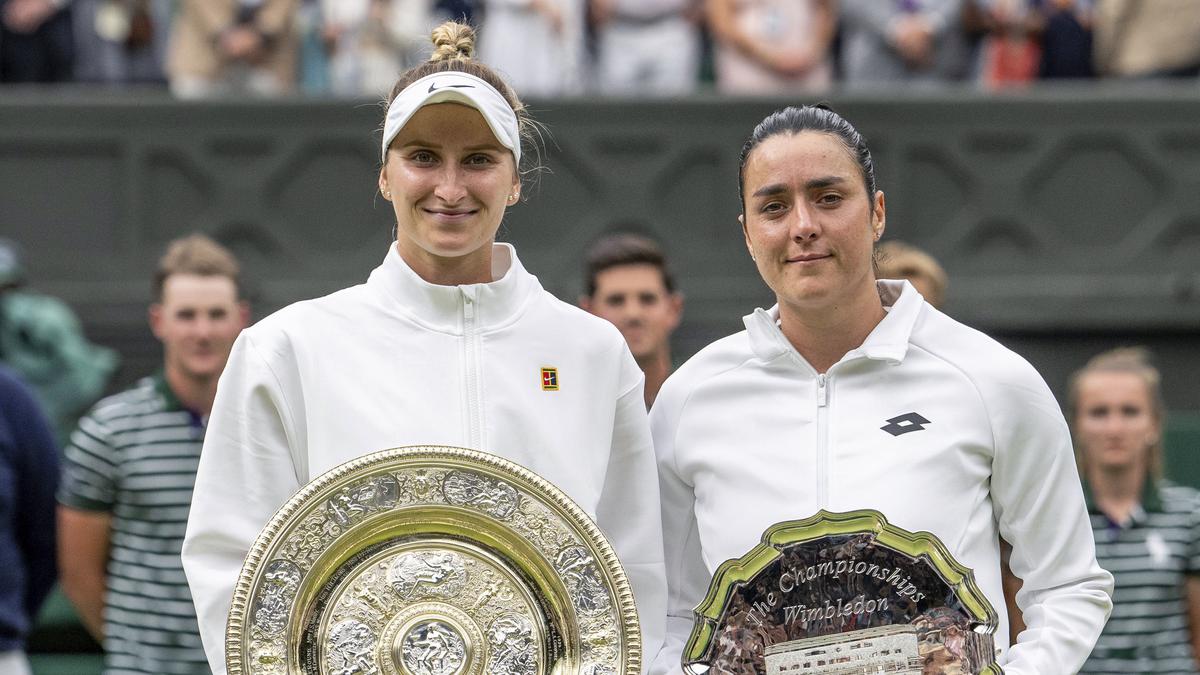Women’s Wimbledon Final History and Significance

The Women’s Wimbledon Final, the culmination of the Wimbledon Championships, holds a profound place in the annals of tennis and women’s sports. Since its inception in 1884, it has showcased the prowess and determination of some of the world’s greatest female tennis players.
The women’s Wimbledon final is set to be a thrilling contest between two of the most in-form players on the tour. At 35 years of age, Novak Djokovic is still one of the best players in the world, and he will be looking to add to his record-breaking tally of Grand Slam titles.
His opponent, Daniil Medvedev, is 10 years younger and has been in impressive form this season, winning the Australian Open and reaching the final of the French Open. It promises to be a fascinating match-up between two of the best players in the world.
The tournament has witnessed many memorable matches, including the 1980 final between Chris Evert and Martina Navratilova, which is widely considered one of the greatest tennis matches ever played. The 2008 final between Venus and Serena Williams was another unforgettable encounter, as the sisters battled for the title in an emotionally charged match.
Elena Rybakina’s Wimbledon victory is a testament to the strength and determination of women in sports. Her triumph serves as an inspiration to young girls everywhere, showing them that anything is possible with hard work and dedication. In a similar vein, Carlos Alcaraz’s recent slams have demonstrated the power of perseverance and belief.
His success on the court is a reminder that even the most daunting challenges can be overcome with the right mindset. Rybakina’s victory and Alcaraz’s accomplishments are both powerful examples of the human spirit’s ability to achieve greatness.
Cultural and Sporting Significance
Beyond its sporting significance, the Women’s Wimbledon Final has had a profound cultural impact. It has played a pivotal role in the growth of women’s tennis, inspiring countless young girls to take up the sport. The tournament has also helped to break down gender barriers in sports, demonstrating that women are capable of achieving greatness in athletics.
Notable Players and Performances

The Women’s Wimbledon Final has witnessed some of the most iconic performances in tennis history. Over the years, several female players have left an indelible mark on the tournament, showcasing exceptional skills and creating unforgettable moments.
These players have not only dominated the Wimbledon courts but have also inspired generations of aspiring tennis players. Their playing styles, strategies, and memorable performances have shaped the legacy of the Women’s Wimbledon Final.
Most Successful Players
Among the most successful female players in Wimbledon history are:
- Martina Navratilova: 9 singles titles, 7 doubles titles, and 4 mixed doubles titles
- Steffi Graf: 7 singles titles, 1 doubles title, and 1 mixed doubles title
- Serena Williams: 7 singles titles, 6 doubles titles, and 2 mixed doubles titles
- Margaret Smith Court: 3 singles titles, 2 doubles titles, and 2 mixed doubles titles
- Billie Jean King: 6 singles titles, 10 doubles titles, and 4 mixed doubles titles
Playing Styles and Strategies, Women’s wimbledon final
These legendary players have showcased a wide range of playing styles and strategies, each with its own strengths and weaknesses.
Martina Navratilova was known for her all-court game, with a powerful serve, precise groundstrokes, and exceptional volleying skills. Steffi Graf possessed a dominant baseline game, with deep, penetrating groundstrokes and a devastating forehand.
Serena Williams combines power and athleticism, using her serve and groundstrokes to overwhelm opponents. Margaret Smith Court relied on her exceptional court coverage and consistency, while Billie Jean King was a master of strategy and tactical play.
Memorable Performances and Upsets
The Women’s Wimbledon Final has also been the stage for some of the most memorable performances and upsets in tennis history.
In 1975, Chris Evert defeated Evonne Goolagong Cawley in a three-set thriller, despite trailing 4-1 in the final set. In 2001, Venus Williams became the first African-American woman to win Wimbledon since Althea Gibson in 1958.
In 2017, Garbiñe Muguruza upset Serena Williams in the final, denying her a record-breaking eighth Wimbledon title. These are just a few examples of the many unforgettable moments that have made the Women’s Wimbledon Final one of the most prestigious and exciting events in tennis.
Contemporary Trends and Future Prospects

The contemporary landscape of women’s tennis is characterized by a surge of young, dynamic players who are redefining the game with their athleticism, power, and technical prowess. The rise of stars like Iga Świątek, Coco Gauff, and Emma Raducanu has injected a new level of excitement and unpredictability into the sport.
One of the most striking trends in recent years has been the evolution of playing styles. Players are now hitting the ball with greater power and spin, leading to shorter rallies and more aggressive baseline play. This shift has favored players with strong serve-and-volley games and those who can control the court with their groundstrokes.
Emerging Stars and Their Impact
The emergence of young stars has had a significant impact on the women’s game. These players have brought a fresh perspective and a willingness to take risks, pushing the boundaries of what is possible on the court. Their success has also inspired a new generation of players to pursue their tennis dreams.
- Iga Świątek: The Polish sensation has taken the tennis world by storm with her dominant performances. Her relentless baseline play and powerful forehand have earned her multiple Grand Slam titles and the world number one ranking.
- Coco Gauff: The American teenager has made a name for herself with her precocious talent and aggressive style of play. She has reached the quarterfinals of Wimbledon twice and is seen as one of the future stars of the sport.
- Emma Raducanu: The British sensation shocked the world by winning the US Open in 2021 as a qualifier. Her powerful serve and aggressive groundstrokes have made her a force to be reckoned with.
Challenges and Opportunities for the Women’s Wimbledon Final
While the future of women’s tennis looks bright, the Women’s Wimbledon Final faces several challenges in the coming years. One of the most pressing issues is the lack of diversity among the top players. The majority of Grand Slam winners in recent years have come from a small number of countries, and there is a need to encourage participation from a wider range of nations.
Another challenge is the need to maintain the prestige and exclusivity of the Women’s Wimbledon Final while also making it more accessible to a global audience. The tournament organizers are constantly exploring ways to enhance the fan experience and attract new viewers.
Potential Future Trends
The future of women’s tennis is likely to be shaped by several key trends. One is the continued rise of power-based play. Players are likely to continue to hit the ball with greater force and spin, leading to even shorter rallies and more explosive matches.
Another trend is the increasing use of technology in the sport. Players are now using data analytics and video analysis to improve their performance and gain an edge over their opponents. This trend is likely to continue, with new technologies being developed to help players train more effectively and prepare for matches.